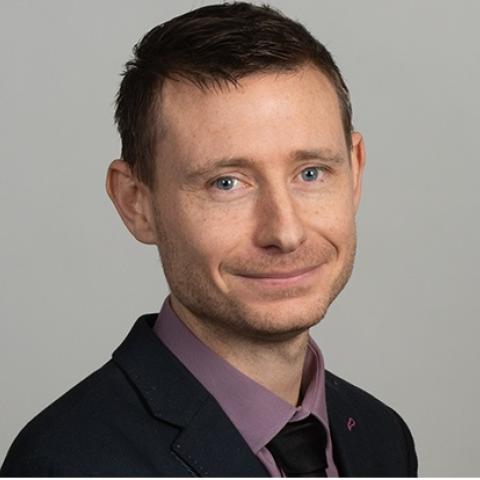ANDREW GROSS
Chargé de recherche (CNRS)
- Imprimer
- Partager
- Partager sur Facebook
- Share on X
- Partager sur LinkedIn
BioCEN

Coordonnées
Bâtiment : Nanobio
Bureau : 105
Bâtiment : Nanobio
Bureau : 105
Adresse :
Département de Chimie Moléculaire (DCM)
UMR-5250
CNRS - Université Grenoble Alpes
570 rue de la Chimie, Bâtiment Nanobio Campus, BP 53
F-38041 Grenoble Cedex 9
Andrew.Gross@univ-grenoble-alpes.fr
Réseaux sociaux :
Curriculum vitae
Current position:
2018- Permanent Researcher (Chargé de recherche) at CNRS-Université Grenoble Alpes
Department of Molecular Chemistry, UMR CNRS 5250
Topic: Nanostructured materials and interfaces to drive and control (bio)electrocatalytic reactions for sensing and energy
2020- Co-founder and Scientific Advisor of the start-up BeFC
2023- INC-CNRS Valorisation Correspondant of UMR-5250
2023- Board member (Vice-President since 2024-) of the French Chemical Society (SCF)-Rhone Alpes
2024 Membres distingués de la SCF 2024
Education:
2008-2012 PhD in Chemistry at University of Canterbury (Christchurch, New Zealand), Supervisor: Prof. Alison Downard
MacDiarmid Institute for Advanced Materials and Nanotechnology PhD Scholarship
2003-2007 M.Chem in Analytical Chemistry at University of Surrey (Guildford, England), Supervisor: Prof. Neil Ward
Previous employment:
2015-2018 Postdoc at CNRS-Université Grenoble Alpes (Grenoble, France)
Department of Molecular Chemistry, UMR CNRS 5250
Topics: Glyconanoparticles and 3D nanocarbons for enzymatic biofuel cells
2013-2015 Postdoc at University of Bath (Bath, England)
Department of Chemistry
Topics: Nanogap Electrochemistry for Chemical Sensing at the Molecular Limit
- Imprimer
- Partager
- Partager sur Facebook
- Share on X
- Partager sur LinkedIn